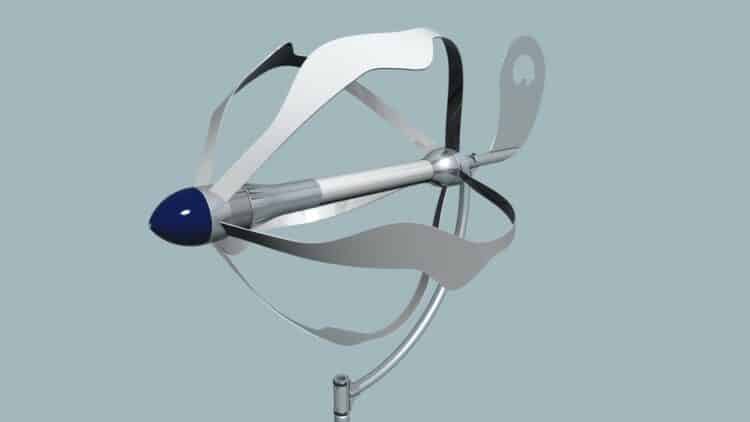Imagine generating your energy without pollution, without noise, and with equipment that could easily pass for a piece of futuristic design. Yes, it sounds like something out of a movie, but it already exists and works. And even more so, in times of rising electricity bills and the search for clean alternatives, solutions like this ball-shaped turbine are beginning to attract the attention not only of engineers and ecologists, but also of architects and urban dwellers who want to combine aesthetics and efficiency. This is because, more than a technical innovation, this turbine challenges the traditional image of modern windmills. No pointy blades are spinning on the horizon, nor that characteristic whistling sound cutting through the air.
Rethinking wind power: the rise of the silent sphere
If you close your eyes and think of a wind turbine, you’ll probably picture long, straight blades cutting through the wind, right? However, this technology we’re talking about goes in the opposite direction: it’s spherical. This changes everything. Its main differences from conventional turbines are its absolute silence, thanks to its shape, which prevents wind noise from reaching the blade tips. It’s also more efficient, thanks to its aerodynamic design, which better utilizes the wind’s force.
It has a friendly appearance, as it doesn’t cast an annoying shadow, making it easier to install in residential areas. And a curious feature of this invention is precisely the marriage of efficiency and aesthetics, which has led to its gaining popularity in urban projects and even high-end buildings. And now, the name of this new product: Energy Ball, it was created by the Dutch company Home Energy.
Energy Ball: compact wind power
Within the Energy Ball lineup, there’s one version that stands out the most: the V200. With a diameter of almost 2 meters and five internal blades, it reaches its maximum power of 2,500W in winds of 19 m/s, which is equivalent to a gale force 8–9 on the Beaufort scale. What does this mean in practice? In a location with an average wind speed of 7 m/s, the V200 can generate up to 1,750 kWh per year.
This is enough energy to supply a considerable portion of an efficient home’s energy consumption, reduce electricity bills, and even return excess energy to the grid (just like these first photovoltaic spheres announced by Japan). Another important point to emphasize is that the V200 doesn’t require a mechanical transmission or active RPM control, as its design ensures stability.
A versatile wind solution for homes, businesses, and beyond
Now, speaking of what sets the Energy Ball apart, its greatest advantage lies in its versatility. It can be installed to: supply power directly to your home, as the inverter sends electricity to the distribution panel, and if there’s any surplus, it’s returned to the grid (causing the meter to “run backward”). It can also be used to charge batteries, which is ideal for locations without a grid connection, functioning as a standalone system.
This flexibility makes the Energy Ball attractive not only for homes, but also for small businesses, schools, and even community projects. And that’s not all, as Home Energy also offers other solutions, such as:
- Photovoltaic solar panels for electricity generation
- Solar thermal collectors for water heating
- Biomass systems for central heating and swimming pools
And an important point to emphasize here is that V200 doesn’t compete with these technologies; in fact, it can work alongside them, forming a clean energy ecosystem for homes and businesses. It’s the logic of the energy mix: leveraging the best of each source to ensure efficiency and autonomy. Imagine combining this energy ball with these energy-generating windows that have just arrived in America.


